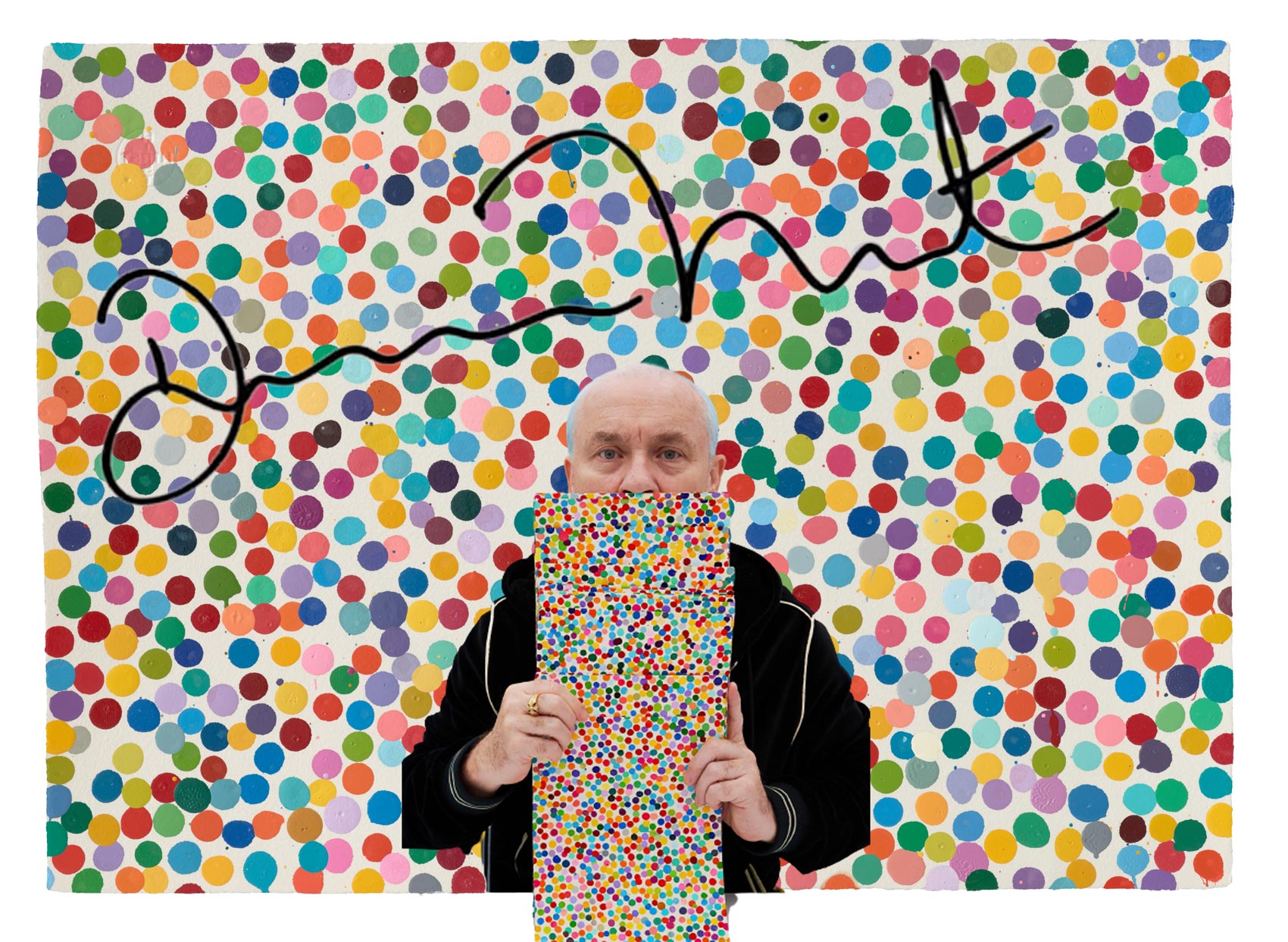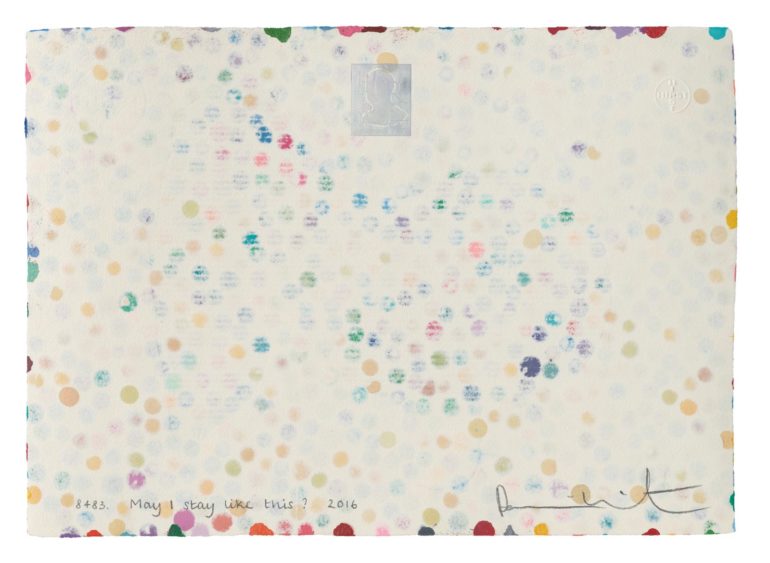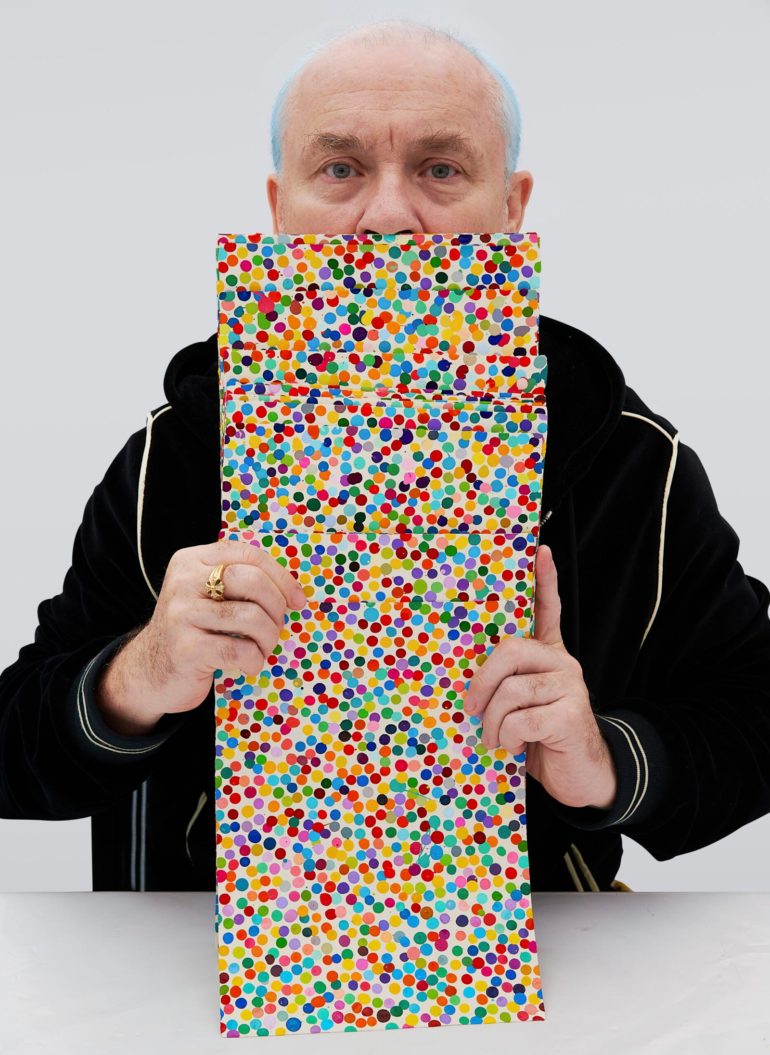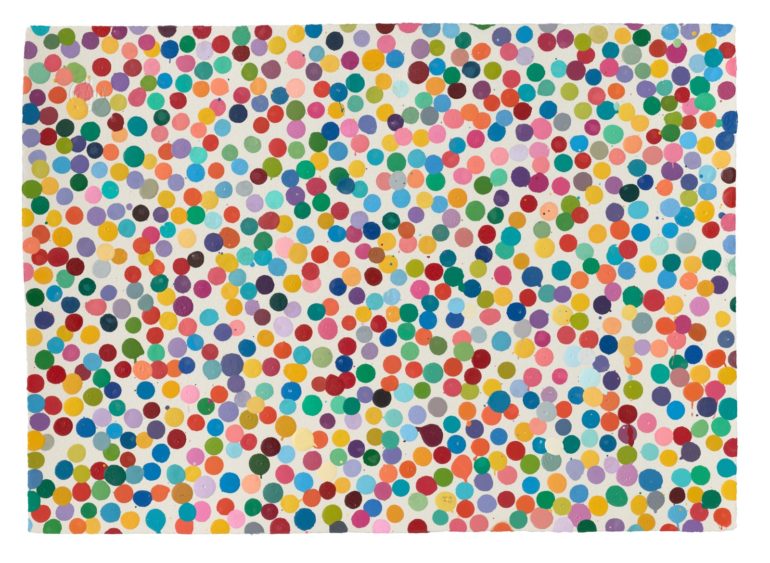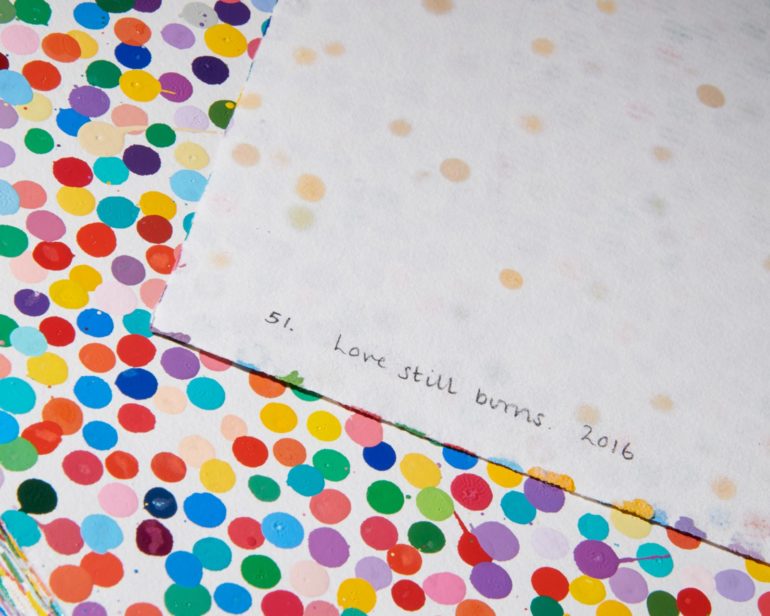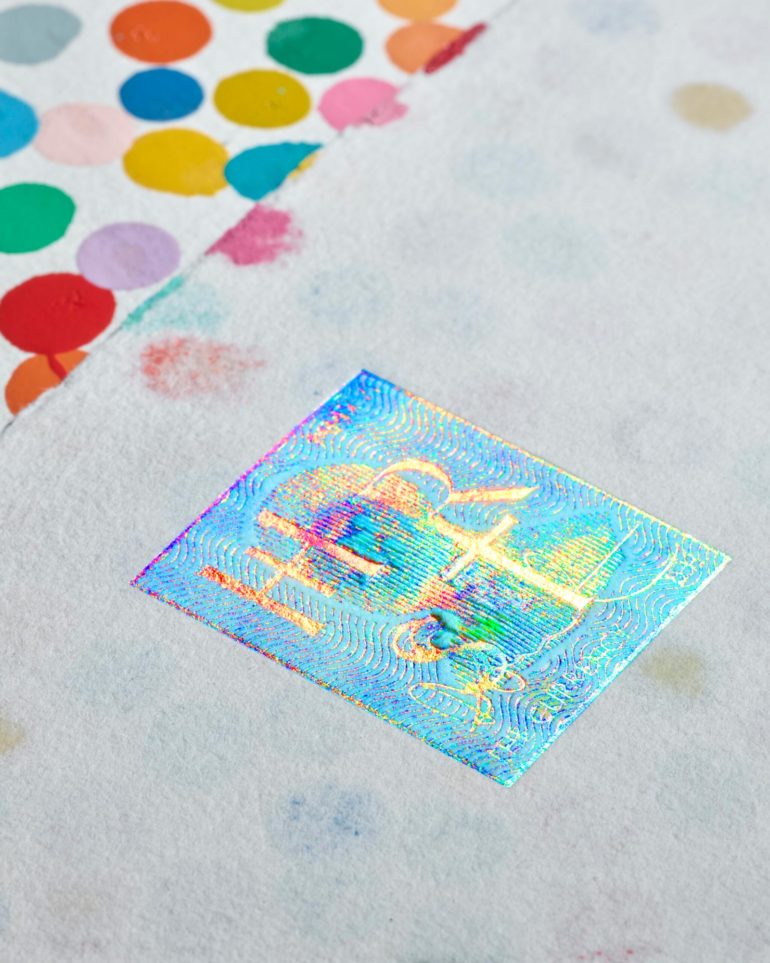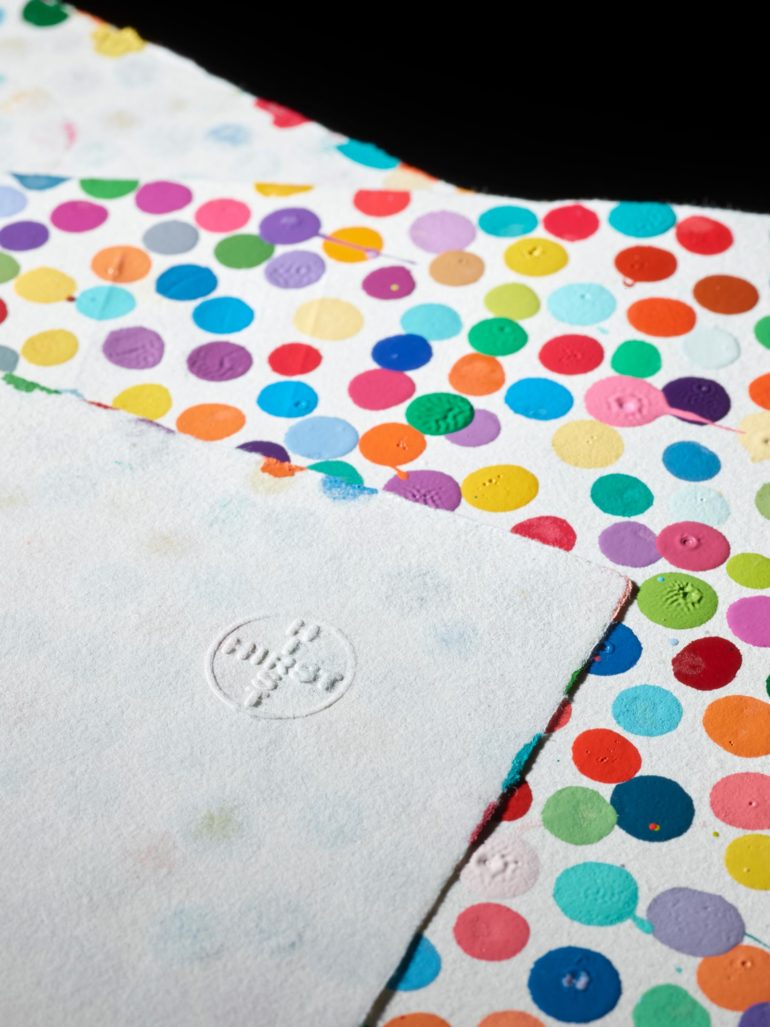In 1983, conceptual artist Louise Lawler created gift certificates for her show at the Leo Castelli Gallery. The owner of each piece was faced with a choice: keep the art or cash it in. Almost 40 years later, Damien Hirst has done something strikingly similar at the Newport Street Gallery in London.
On view until 30th October, The Currency is Hirst’s latest project. 10,000 pieces of handmade A4 paper, each adorned with anti-counterfeit features and a field of multicoloured dots, are paired with corresponding NFTs. 4851 physical paintings are hung in columns that fill the gallery, interrupted by greyscale facsimiles which symbolise paintings that the owners have chosen to burn.
Here’s the thing: collectors bought both physical and digital works, but were only permitted to keep one. Once a decision was made, the losing piece was bound for destruction. In the final gallery room, furnaces lie in wait for paintings that lost out to their digital counterparts. They will be burned as the exhibition progresses.
Across the physical works, some dots boast paint trails, revealing the speed at which Hirst painted and the way he spread the paper in rows, working across multiple pieces simultaneously. Others reveal mottled indents from the brushwork and from tiny paint bubbles bursting, creating moments of texture across the surface. Each piece is unique, never repeating an arrangement or colour, yet maintaining the effect of sameness.
Though these artworks are references to Hirst’s Spot Painting (1986), comparisons with fellow polka dot-possessed contemporary artist Yayoi Kusama are unavoidable. Her polka dot fields summon an experience of oblivion, engaging with ideas of self-annihilation and cosmic grandeur. Hirst’s are grounded in the realities of currency and exchange. That the polka dots line the first gallery room as wallpaper, and blend seamlessly into merchandise at the gift shop, could be taken as a symptom of the project’s success, or of its banality.
The title of each painting marks a lyrical departure from the exhibition’s main concern – literally. Each name is the result of an AI raised on Hirst’s favourite song lyrics, which then generates truisms and witty turns of phrase. From the crass and self-aware 01 Totally gonna sell you, to the humorous 1442 Get on my wife and the wistful 1530 You are exactly where I ought to be, the names capture a range of emotions and experiences that Hirst’s polka dot pounds are unable to express alone. ‘Down with sadness’, one demands; ‘He’s taken my wallet’, another wryly observes. It’s a shame they’re retrospectively tacked on to fabricate a more distinguishable experience between each painting. There’s an idea here that wasn’t given the room it deserved to grow.
That each artwork corresponds to an NFT counterpart is where the project’s alleged interest lies. In July, collectors were faced with the choice of keeping the physical work they had purchased and relinquishing the NFT, or keeping the digital work and allowing the painting to be burned in its place. This buy-in gives the art a dimension of participatory performance, where collectors were forced to choose which form of currency they trusted more – as though deciding between ownership of a painting or an NFT by a world-renowned artist is a leap of faith.
The problem is that the question at the heart of the exhibition (which is more valuable, the physical or the digital artwork?) is simply uninteresting. This is a project that creates value without critique. It is not concerned with interrogating why something is afforded value, or with asking uncomfortable questions about the great stake of private money in the art world. Art is created, bought and sold with money. Now through The Currency, art is money. And it’s burnt in a furnace. During a time when many people don’t have the funds to heat their own homes.
Money has long been viewed as a dirty spectre haunting the industry, but this project does nothing to investigate why or to change this perception. “What if I made them and treated them like money, or something”, Hirst says of his paintings in the exhibition video. What indeed. One of his paintings, number 5411, encapsulates the only sane reaction to this project: ‘Yeah, ok’.
The Currency is on view at Newport Street Gallery in London until 30th October.

